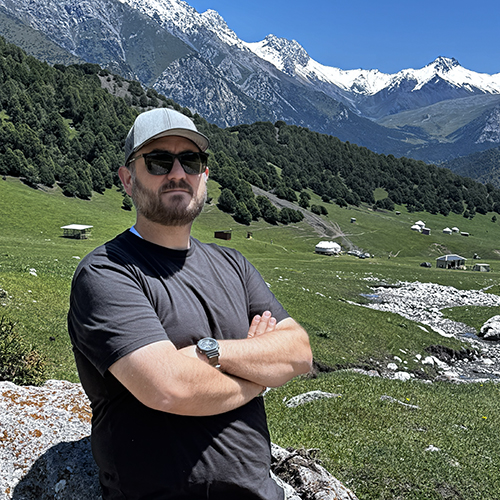The next time you find yourself unable to resist a sweet treat, feel free to blame your Pleistocene ancestors. According to behavioral ecologist Gordon Orians, a fondness for sweets is just one of many human responses that date back fifty thousand years, to our earliest hominid relatives living on the African savanna. Some of these inherited responses continue to be useful; others persist despite making little sense in contemporary society.
Orians, professor emeritus of biology, explores the role of evolution in human emotion in his book Snakes, Sunrises, and Shakespeare: How Evolution Shapes Our Loves and Fears, published in April 2014 by The University of Chicago Press. The book combines original research and synthesis of previous literature on the subject, viewed through the lens of a behavioral ecologist.

“Most of the literature I cite is from evolutionary psychologists,” Orians says. “As a behavioral ecologist, I came at it from a different place, bringing an ecological perspective.” Orians explains that behavioral ecologists study the decisions that all living creatures make to get along in the world, including where to live, how to modify their environment, what’s safe to eat, and how to avoid becoming someone else’s dinner.
Understanding how our ancestors addressed these fundamental concerns helps explain our emotional responses to our environment today. Many responses that were essential to survival became pre-wired and passed down as part of our genetic makeup. “Some knowledge is available to us from birth, like preinstalled software,” Orians explains in the book. “Before we can stand, walk, or talk, our infant brains possess a kind of genetic memory known as innate knowledge—that body of things we know about our world without having direct experience of them.”
Some knowledge is available to us from birth, like preinstalled software. Before we can stand, walk, or talk, our infant brains possess a kind of genetic memory known as innate knowledge...
Because evolutionary change is a slow process, much of that preinstalled software is designed for life on the African savanna rather than the post-industrial world. This is why people who have never encountered a snake still report an intense fear of them, far greater than their fear of guns or speeding cars or other modern dangers that pose a more serious risk. It may also be why, in memory experiments, subjects consistently prove better at recalling animal tracks than other unfamiliar objects, or why we crave sugar-rich foods, which were—in the form of honey—a “nutritional and energy bonanza” for early hominids, says Orians.
Sweets are just one of the pleasures we crave thanks to our ancestors. Orians believes that certain landscapes and other natural features, like sunsets, appeal to us because of the role they once played in keeping us safe. “Humans are diurnal animals who see poorly at night,” he says. “When the sky starts turning color, that’s a signal that within a half hour it will be dark. The question for our ancestors was, are you in a safe place for the night? When they saw that sunset, it likely commanded their attention. They would ignore it at their peril. That’s why sunsets continue to be such an attention-grabber.”
While many of our inherited emotional responses are no longer essential for survival—when’s the last time you tracked an antelope?—some continue to make sense. Our disgusted response to smells that we perceive as bad, such as spoiled food, dates back many millennia, to a time when our ancestors learned that specific odors signaled danger. “Disgust is evolutionarily programmed intuitive microbiology that developed long before people knew that microorganisms existed, much less that they caused disease,” Orians notes in the book. Yet even our ability to detect worrisome odors is rarely tied to survival today, with refrigeration and strict guidelines for food safety.
Orians believes that it is important to recognize the disconnect between our savanna-based emotional responses and the modern society in which we live. Because genetics has not caught up with the immense changes in our environment since the industrial revolution, our desires and fears may be misguided, putting us in danger. We still crave sweets, but today’s easy access has led to obesity and health problems. We should fear guns and fast cars, but studies indicate that we’re more terrified of creepy-crawlies.
Less worrisome is our hard-wired appreciation of the setting sun, one of life’s simple pleasures. “A sunset is as pretty to me as anybody else even though I’ve got a theory about why I enjoy it,” says Orians. “If I’m wired to enjoy it and I can’t override that, that’s just fine with me.”
More Stories

A Sports Obsession Inspires a Career
Thuc Nhi Nguyen got her start the UW Daily. Now she's a sports reporter for Los Angeles Times, writing about the Lakers and the Olympics.

Through Soil Science, an Adventure in Kyrgyzstan
Chemistry PhD alum Jonathan Cox spent most of 2025 in Kyrgyzstan, helping farmers improve their soil—and their crops—through soil testing.

The Public Impact of Private Cities
Geography major Edwin Bai has researched private cities, developed by individuals and corporations, that "take the libertarian idea of low government regulation to the maximum."